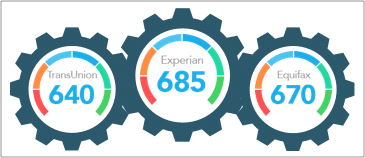A Direct Stafford Loan is a student loan from the federal government. It’s an affordable borrowing option available to undergraduate and graduate students who are still in school. To find out if you qualify for this loan, you’ll need to complete the FAFSA. But before you borrow, it’s important to understand exactly what a Direct Stafford loan consists of, including the fees, available amount, and repayment terms.
How Much Can I Borrow?
The total amount you can borrow with a Direct Stafford loan will be determined by your school and will largely depend on whether you qualified for an unsubsidized or subsidized loan. Regardless of which type you qualify for, the total amount will not exceed your financial need.
Your dependency status, your financial need, the cost of your institution, and the year you are in school will also affect the total amount of your loan. There are annual and aggregate borrowing limits on both subsidized and unsubsidized loans. These maximum amounts are set by the U.S. Department of Education and range from $5,500 to $20,500 annually.
The loan will be serviced by an authorized servicer that works with the U.S. Department of Education. However, the funds still come directly from the federal government. You won’t get to choose which servicer you work with, but they are the entity you’ll make payments to. Your servicer does not affect your total loan amount or your interest rates.
Difference Between Subsidized and Unsubsidized Loans
The difference between subsidized and unsubsidized loans can be confusing. These are the key differentiating factors:
- Unsubsidized: Direct unsubsidized loans are available to both undergraduate and graduate students. While applicants must still complete the FAFSA, you won’t need to prove the financial need to qualify. With an unsubsidized loan, you’ll be required to pay interest while in school and during any deferment periods.
- Subsidized: Direct subsidized loans are available to undergraduate students who prove financial need. The U.S. Department of Education will pay your interest while you’re in school, during your grace period, and during any deferment periods.
Do I Have to Pay Them Back?
All Direct Stafford Loans need to be repaid. However, the type of loan you have will affect when you need to begin paying them back. If you have a subsidized loan, the government will pay your interest while you are in school, during deferment, and during your grace period. But if you have an unsubsidized loan, you’re responsible for paying the interest as soon as your loan is disbursed.
Direct Stafford Loans are eligible for several different repayment plans that will be available to you after you finish school. These payment plans include:
- Standard Repayment: Payments remain fixed over the 10-year repayment term. All borrowers are automatically enrolled in this option until another is chosen.
- Graduated Repayment: A 10-year repayment term with lower initial payments that increase every two years.
- Income-Driven Repayment: Monthly payments are a percentage of your income. There are several different income-driven repayment plans available for borrowers with varying financial needs.
These loans are also eligible for Public Service Loan Forgiveness. With this program, your loan can be forgiven if you work in a qualifying non-profit or government position and make 120 qualifying payments.
What Are the Benefits of Direct Stafford Loans?
Direct Stafford Loans are available to all undergraduate and graduate students. There’s no need to show proof of financial need to qualify for the loan.
Are There Any Pitfalls?
When it comes to Direct Stafford Loans, there are a few things you should be aware of before accepting the terms.
- Debt: Using a Direct Stafford Loan to pay for college means you’ll be taking on debt that needs to be repaid. When you take on debt, you’re taking on certain risks as well, like possibly defaulting on that loan in the future.
- Bankruptcy Limits: Student loans aren’t usually dischargeable in bankruptcy. So if you do find yourself facing financial hardships down the road and turn to bankruptcy as a last resort, your options might be limited.
- Unsubsidized Interest: If you’re awarded an unsubsidized loan, you’ll need to pay interest from day one. If you’re unable to make the interest payments, that amount is added to your total loan and will build over time, making the total cost of your loan more expensive.
- Borrowing Limits: If you’re awarded a subsidized loan, the amount you can borrow will be limited more significantly than with an unsubsidized loan.
What Are the Interest Rates?
Direct Stafford Loans have fixed interest rates set by the U.S. government, meaning they’ll never increase during the life of your loan, even if interest rates for new loans are different in the future. Regardless of your income or credit history, you’ll receive the same terms, rates, and limits as everyone else.
For Direct Stafford Loans disbursed during the 2019-2020 school year, undergraduates have an interest rate of 4.53%, while graduate students have an interest rate of 6.08%.
Are There Any Additional Fees?
There is a fee for Direct Stafford Loans. It is a percentage of the total loan amount, and it’s deducted from each loan payout you receive. Currently, all loans have an origination fee of 1.059%.
How Do I Qualify?
To qualify for a Direct Stafford Loan, you’ll need to meet these requirements:
- Be a U.S. Citizen, a National, or a Permanent Resident
- Complete the FAFSA
- Never Defaulted On a Previous Student Loan
- Never Owed a Refund On a Previous Student Loan
- Be Enrolled at an Accredited Institution at Least Half-Time
- Be Enrolled In a Program That Leads to a Diploma or Certificate
- Be In Good Academic Standing
- For Subsidized Loans, Proof of Financial Need
Your income and credit score do not factor into whether or not you qualify.
The Bottom Line
Direct Stafford Loans are one of the most affordable options available when it comes to student loans. Since they’re available to both undergraduate and graduate students and there’s no need to prove financial hardship to qualify, they’re an excellent option regardless of where you are in your education as long as you’re aware of what’s expected of you.




